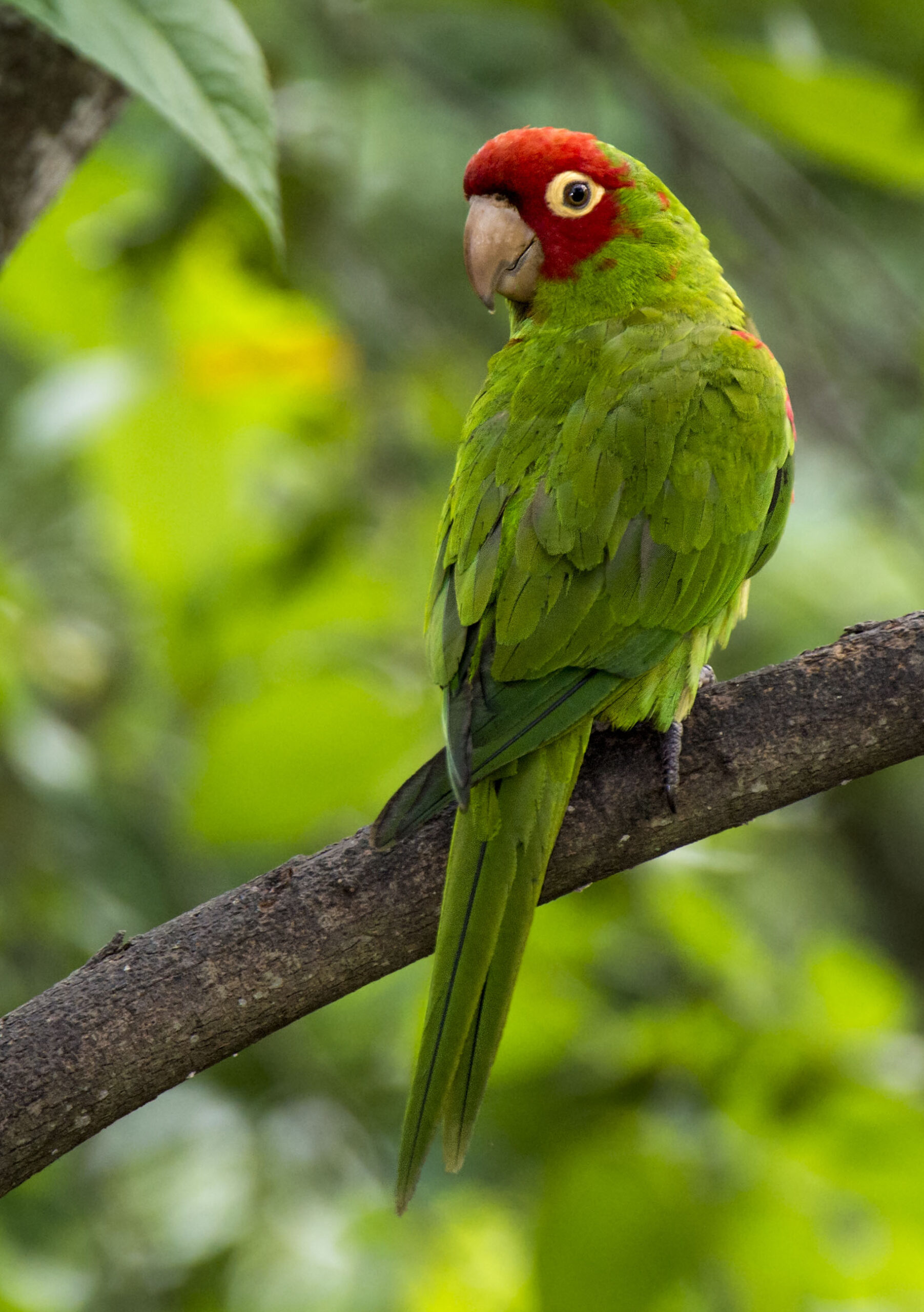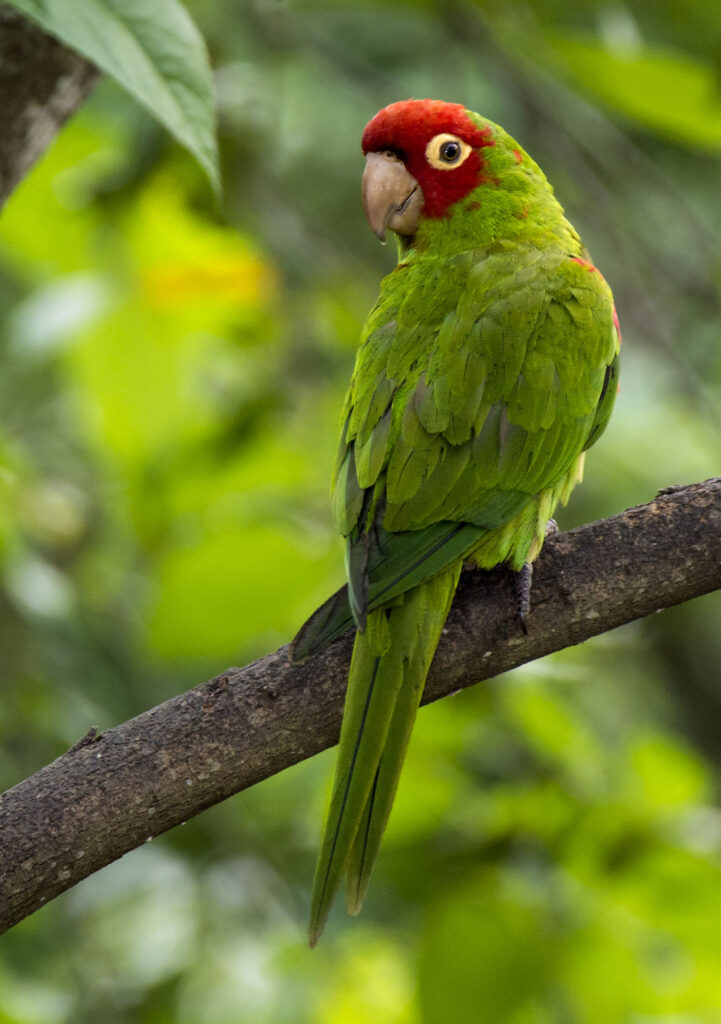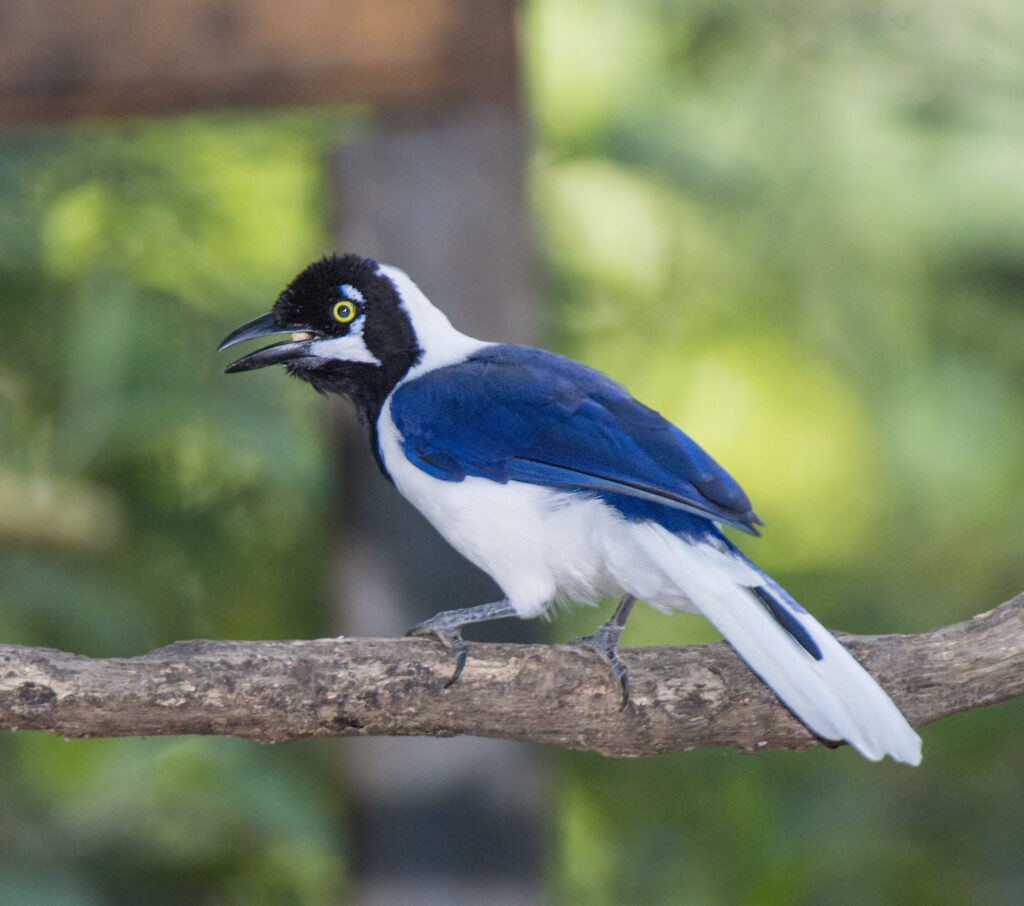
By Daniel J. Lebbin, Vice President of Threatened Species, American Bird Conservancy

In prior blog posts here, I have highlighted antpitta-feeding at Tapichalaca Reserve and one of the most decadent birds of the world – the Club-winged Manakin at Buenaventura Reserve. These are two anchor localities in the Southern Ecuador Birding Route, and both are conserved and managed by Fundación de Conservación Jocotoco in Ecuador. Jocotoco’s Jorupe Reserve and Urraca Lodge offer a very different nature experience in the dry forest of the Tumbesian region – which extends from southwestern Ecuador into northwestern Peru. This is a major transition zone between wetter forests of the Choco to the north and drier Sechura desert to the south, and therefore supports a unique set of dry transition forest species that occur nowhere else in the world.

Perhaps the most conspicuous and beautiful of these Tumbesian endemic birds is the flashy White-tailed Jay. These jays are much larger than the Blue Jays familiar to birders and photographers in North America, with bushy crests and proportionally longer tails. As they noisily fly across dry scrub, their white napes and tails are highly visible from great distances. They even come to feeders along the poolside veranda at Urraca Lodge. Like many jays, White-tailed Jays eat a variety of insects, seeds, and will predate other birds’ nests. Birds of the World reports a pair of this species excavating a hole in the side of a Pale-legged Hornero nest to access the eggs.

Many other Tumbesian endemics can also be seen at this reserve, including Baird’s Flycatcher. Rufous-headed Chachalaca and Red-masked Parakeet can also be seen here. The nearby Utuana Reserve supports fabulous hummingbirds like Rainbow Starfrontlet and Purple-throated Sunangel. Urraca Lodge also offers fantastic night-birding opportunities, with Buff-fronted Owl and Pacific Pygmy-Owl possible.

Photographers and birdwatchers interested in visiting Jorupe Reserve and staying at Urraca Lodge can learn more and make reservations through Jocotours. American Bird Conservancy has long supported our partner Fundación Jocotoco Ecuador, including land acquisition, reforestation, capacity building and promoting tourism throughConservationBirding at Jorupe Reserve. Additional information on birding Jocotoco reserves in southern Ecuador is well presented in the following recent articles:
- Córdova Saeteros, M. L. 2020. Jocotoco’s southern circuit. Neotropical Birding. 27:15-29.
- Lebbin, D. J. & M. L. Córdova Saeteros. 2021. The Birding Jewels of Southern Ecuador: Using Ecotourism to Save Threatened Species. Birding 53(7): 52-60. Available online here.


